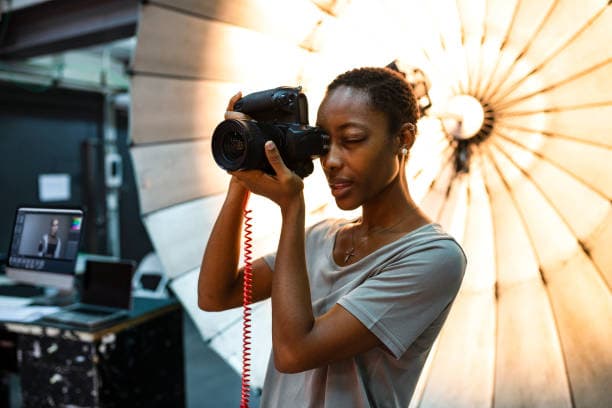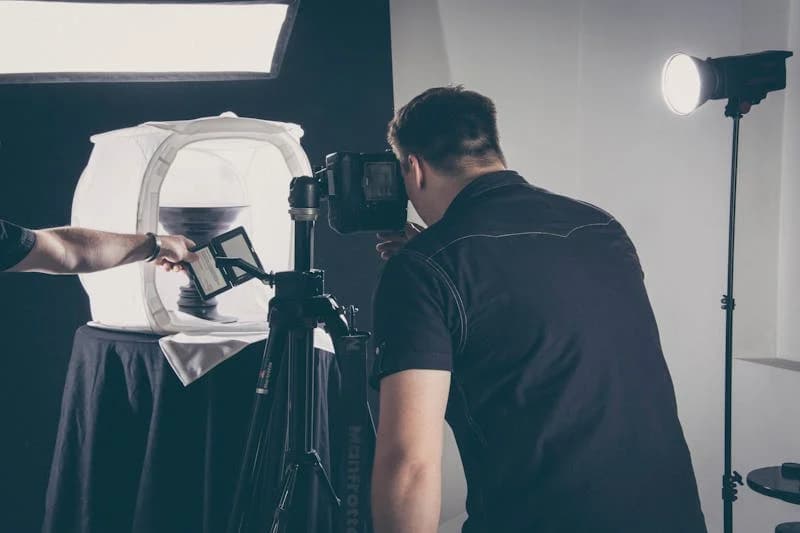708-542-7343

How to Take Silhouette Photos
Silhouette photography grabs attention because it shows subjects as dark shapes against a bright background. This type of photo can add mystery and make ordinary scenes look special. To take great silhouette photos, you need to know some tricks. Here are some of them.
Basics
To capture a good silhouette, play on the contrasts between the bright background and the dark object in the foreground. This means you can shoot in good weather on a sunny day, at dawn, or sunset. At night, you will need a powerful light source. You can photograph the landscape behind trees or any object against the backdrop of a picturesque sunset.
Silhouette photography often requires manual adjustments:
- Focus manually to ensure your subject is sharp.
- Meter for the sky or background to get the exposure right. This will naturally darken your subject.
- Increase the shutter speed to underexpose the foreground.
- Use a small aperture (high f-stop number) if you want both the background and silhouette to be in focus.
Research
The sky at sunset or dawn makes a great backdrop for a silhouette, but capturing the best effects is challenging because the morning and evening hours are short. Travel around and find a good spot to shoot during daylight.
Once you’ve selected locations, look for objects that can form beautiful silhouettes, focus on easily recognizable shapes. Make sure that there’s nothing in the background except the sky. Trees, skyscrapers, and cranes are classic things, but don’t limit yourself. If you can’t find a suitable silhouette, create your own. For instance, you could have a friend pose for you.
City Lights
At night, cities turn into suitable places for photography. Illuminated advertising signs and buildings create a stunning backdrop for passersby, statues, and everyday objects that can create interesting silhouettes. It’s important to make the subject dark and preserve all the shades of color in the background. For this, you can use a shutter speed that allows you to hold the camera steady even when shooting at night. You need to set the exposure to the bright area. Then the darker silhouette in the foreground will become quite dark, as it won’t be exposed.
Experiment and Edit
Composition rules like the Rule of Thirds can add interest to your silhouettes. Also, consider having negative space around your subject to emphasize its shape. Experiment with different perspectives and angles to find the most striking composition. And remember that post-processing can significantly improve silhouette photos. Adjust contrast, brightness, and saturation to make your silhouettes pop against the background. Be careful not to overdo it. The goal is to preserve the natural contrast between your subject and the light source.
Iconic Examples
Some of the best silhouette photos have become iconic. You should watch them to get inspired and learn from them. For example, Steve McCurry’s silhouette of a camel train in the deserts of Rajasthan. This is a powerful image. In the photo you see the camels and their riders against the desert highlights. You feel their journey and life in the wild. The silhouette technique used here adds a magical touch to the scene.
Another classic example is the silhouette of the Great Pyramid of Giza at Sunset. There are countless photographs of Egypt’s pyramids, but those with the pyramids’ silhouettes at sunrise or sunset are particularly striking.

Courses and Tutorials
If you are interested in learning silhouette photography, there are various resources at your disposal.
Online Courses
- Udemy and Skillshare offer courses specifically focused on silhouette photography There you can learn from basics to advanced techniques.
- YouTube has countless free tutorials from experienced photographers who share tips and step-by-step guides.
Photography Websites and Blogs
- Digital Photography School and PetaPixel feature articles and guides on silhouette photography.
- Photography blogs frequently share helpful tips and inspiring examples too.
Photography Clubs
- Join a photography club or community groups. Members can share knowledge, and clubs often organize outings during times that are ideal for silhouette photography, such as sunrise or sunset. There you can ask questions, share your work for feedback, and learn from others.
Books
There are many photography books that cover the topic of silhouettes as part of broader photography techniques. Look for books that focus on composition and lighting, as these are the most important aspects of silhouette photography.
In conclusion, while learning is valuable, nothing beats practice. Experiment with different light sources, backgrounds, and subjects to see what works best.